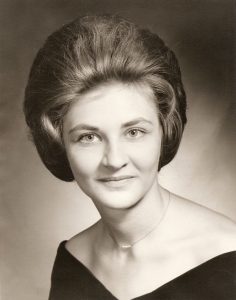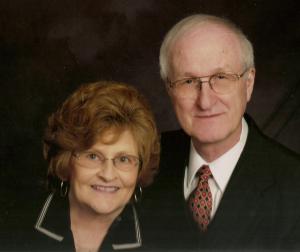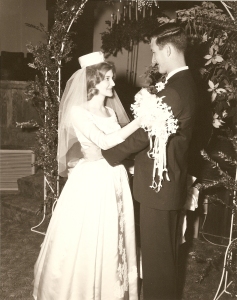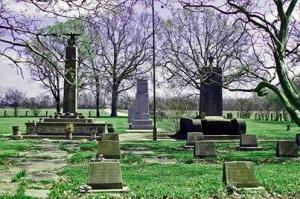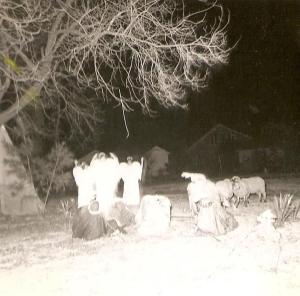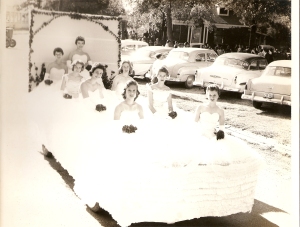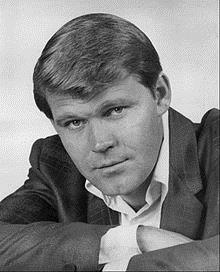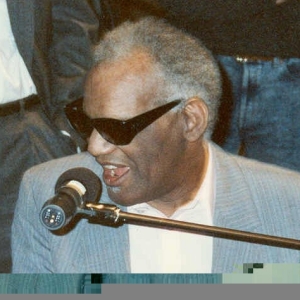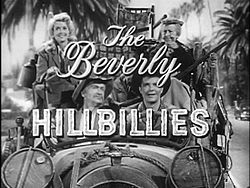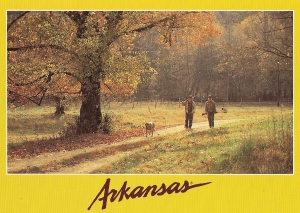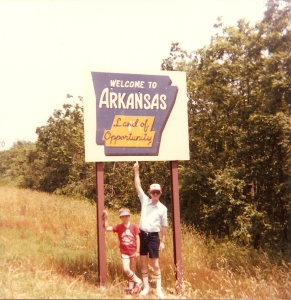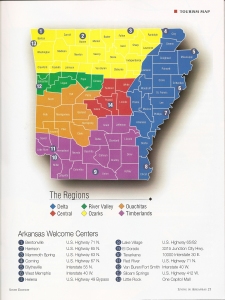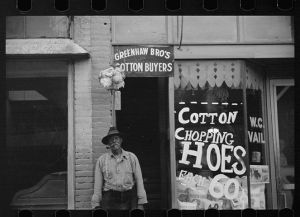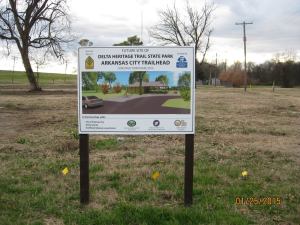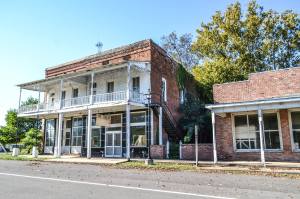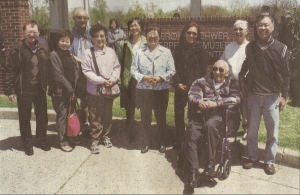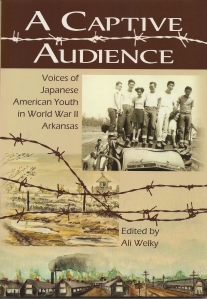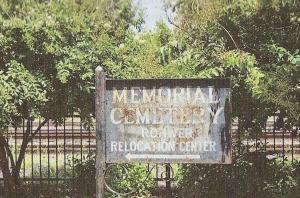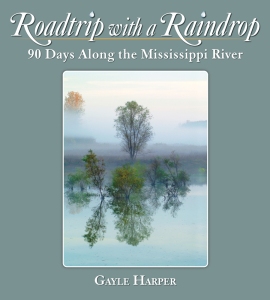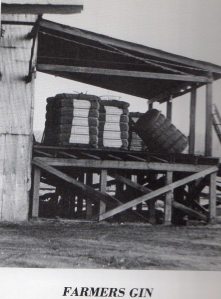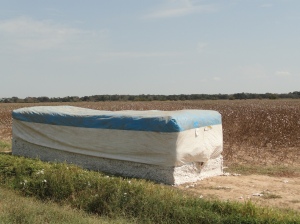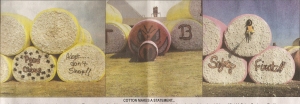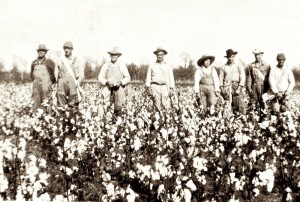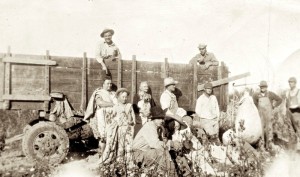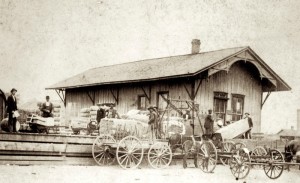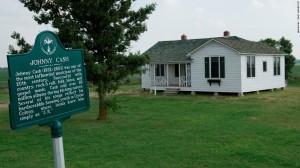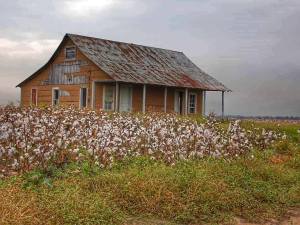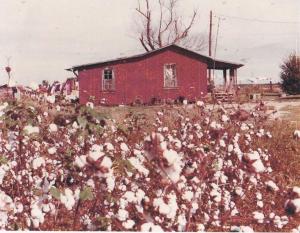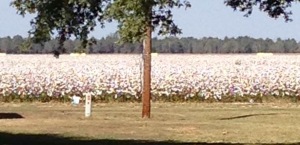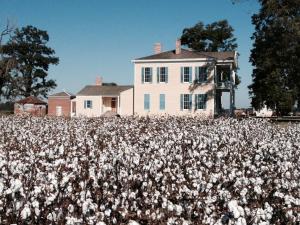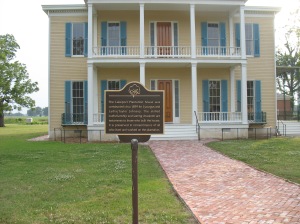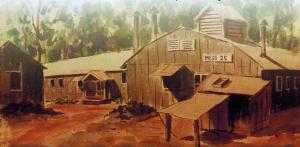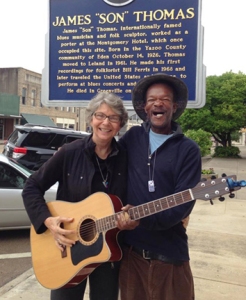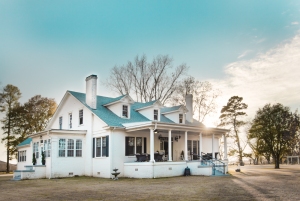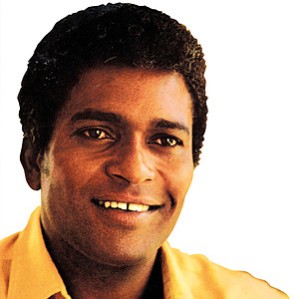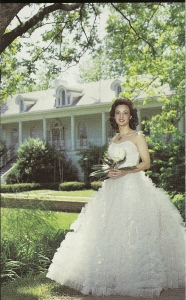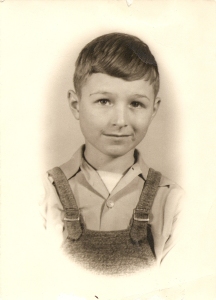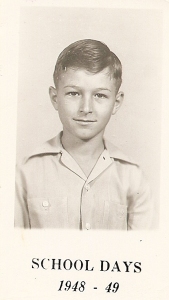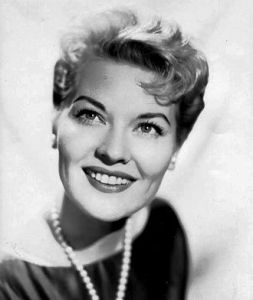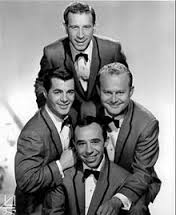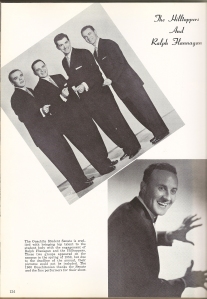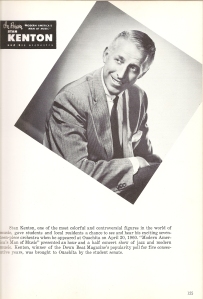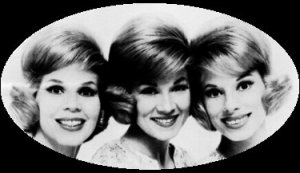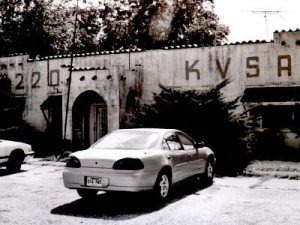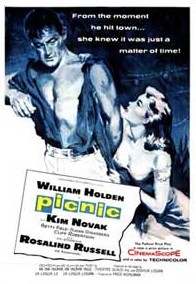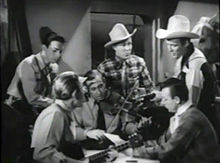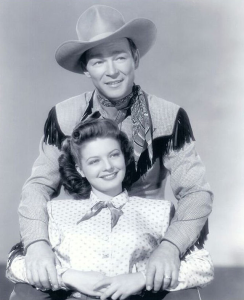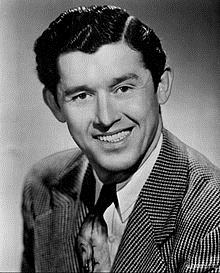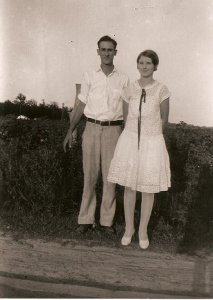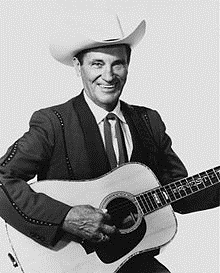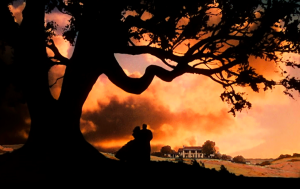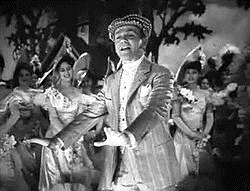Introduction
“Rock and Roll may have turned gray, but its roots will always be black.”
—Jimmy Peacock
“Well Nashville had country music
but Memphis had the soul
Lord, the white boy had the rhythm
and that started rock and roll
And I was here when it happened
don’t y’all think I ought to know . . .
I watched Memphis give birth
to Rock and Roll.”
—Carl Perkins, “Birth of Rock ‘n’ Roll”
(To view a photo of the original
Sun Studio Million Dollar Quartet
with a video of this song by Carl Perkins, click here.)
(To learn more about the Million Dollar Quartet,
see the Addenda section at the end of this post.)

Original 1956 Sun Studio Million Dollar Quartet: (l-r) Jerry Lee Lewis, Carl Perkins, Elvis Presley, Johnny Cash (to magnify, click on the photo)
In my preceding post titled “The Soundtrack of Our Lives, Part II: Pop Music of the 1950s” I discussed some of the popular music that I heard and listened to during that decade of my youth.
In this post I had intended to discuss the 1950’s Rock and Roll music that dominated the second half of that decade. However, since it became so complex I realized that I had to limit this post to the Delta roots of Rock and Roll during the fifties.
Although the 1950s are often portrayed as an ideal, wholesome, stable, peaceful, and uneventful period, that rather romantic perspective is not entirely accurate. Besides my own personal life-changing experiences mentioned in my preceding post on Pop music of the 1950s, there were other life-changing social and historical events taking place during that decade.
Some of these include: the integration of blacks and whites in the U.S. Armed Services ordered by President Harry Truman in 1948; the Korean Conflict from 1950 to 1953 (humorously but not always realistically portrayed in the popular 1970’s TV series M*A*S*H); the 1954 Supreme Court decision outlawing racial segregation in American public schools; the ensuing Civil Rights Movement, especially the 1957 Central High School Integration Crisis in our capital city of Little Rock, Arkansas, which captured headlines around the world for two years or more; the beginning of the Cold War between the United States and the Soviet Union, including the space race, with the Soviets launching the first satellite in orbit around the earth called Sputnik, and the United States detonating the first airborne hydrogen bomb; and many other such events of national and international significance and concern.
As indicated by the opening quote above from Carl Perkins, that decade is usually considered the beginning of the style of music which came to be known as “Rock and Roll.” Although some music critics will disagree with Perkins’ assertion that Memphis was the birthplace of Rock and Roll, it must be admitted that both Memphis music recorder and promoter Sam Phillips and his Sun Studio did have a powerful influence on the birth and early development of R&R. (To learn more about Sam Phillips and Sun Studio, see the links in the Sources section at the end of this post.)
This was especially true for the youngsters, like me, throughout the Mid-South who began to listen to that group of musicians and their style of music which was early called “Rockabilly,” in reference to its roots in black Blues, Rhythm and Blues, and Spirituals, and white Country-Western (“Hillbilly”), Gospel, and Pop music.
As indicated, it is those early Delta roots of Rock and Roll that I intend to address in this post. But the post is not really meant to be a factual history of the birth and development of Rock and Roll. That subject can be easily accessed online through Wikipedia articles such as “Rock and Roll” and “1950s in Music.” Rather, this post is supposed to be a general presentation of some of the early 1950’s Rock and Roll performers and songs that served as part of the “soundtrack” of my teenage years during my formative high school and college days.
My Personal History
of the Roots of Rock and Roll Music
“One Mint Julep”— The Clovers. Late 1951. First of these [Black Rhythm and Blues songs] which I remember listening to on radio [in early 1950s]. Group produced hits in R&B field in early fifties (Bobby Vee and Bobby Vinton—white pop artists covered their material). One big hit left in 1959, ‘Love Potion Number 9’ which was still being performed by rock groups in 1970’s. Cross-over hit popular with whites also.”
—Entry in my late 1970’s personal history
of the origin and development of Rock and Roll music.
(To hear this early 1950’s song by the Clovers, click here.)
(To learn more about this song from Wikipedia, click here.)

The Clovers
Somewhere between 1977 and 1981, while I was working as a French translator and editorial assistant for an international Christian ministry in Tulsa, I was confronted with an interesting question about Roll and Roll music.
Since I was working with a group of men who were about fifteen years younger than I, one day they began to question and debate among themselves, “Who started Rock and Roll?”
As I listened, I could not believe the “answers” they were suggesting, such as Bob Dylan, Janis Joplin, Jimi Hendrix, Pete Seeger, etc. Finally, since like Carl Perkins, I was “there when Rock and Roll was born,” I could not help but interject my opinions into the conversation.
Surprisingly, either they did not understand me or they did not believe me. It seemed that I was talking about people and songs and music they had never heard of. So as a professional copyeditor, “The guardian of precision, the protector of the facts, a professional perfectionist dedicated to the idea that you can believe what you read (From Manuscript to Book),” after work I headed to the Tulsa library to research the subject and prove my point.
After hours and hours of research (which could have been done in a few minutes with today’s technology) I had gathered enough information to fill four or five single-spaced pages (typed on an old worn-out Underwood portable typewriter) and copied enough music to fill both sides of four cassette tapes (one of which is now missing). From that material, I made up a rather exhaustive history of the birth and early development of Rock and Roll as I knew it, experienced it, and recalled it.
Beginning with its primitive roots in Mississippi River Delta work chants, through early Delta Blues tunes often played on nothing more than a single wire on a broom handle attached to the post of a shotgun house, through true Delta Blues music played on a guitar and/or “French harp” (harmonica), and Rhythm and Blues with a larger band and more sophisticated musicians I listed dozens of examples of the movement and development of the Blues from the Delta to Memphis and then upriver to places like Chicago, and downriver to New Orleans.
I particularly traced that movement to Memphis and to Sam Phillips and Sun Records and the small group of black musicians whose music Phillips recorded in an effort to promote it to larger audiences since at the time white recording studios would not record black music, and white radio stations would not play it. From there I showed how Phillips and others began to record some black Delta Blues musicians like B.B. King, “Muddy” Waters, and “Howlin’ Wolf.” As Phillips once said: “When I heard Howlin’ Wolf, I said, ‘This is for me. This is where the soul of man never dies.’” He was obviously not alone in that opinion, especially among young white Deltans like me.

Sam Phillips in the 195os

Sun Studio in Memphis
But Phillips also began to seek out white performers (like Elvis Presley) who could “cover” black music for white audiences, a subject I will discuss in my next post. (One of those white performers for another recording label cited in my previous post on “Pop Music of the 1950s” was Pat Boone, a squeaky-clean, white-buck-shoe singer who “covered” several black musicians with hits like “I Almost Lost My Mind,” which I also offered in a video by Fats Domino.) Phillips also recorded white musicians like Carl Perkins who could write and perform their own versions of Rock and Roll songs such as “Blue Suede Shoes” (1955) and “Birth of Rock ‘n’ Roll” (1986) quoted above.
As an example of the original black music later “covered” or copied by white performers, in my personal history of the origin of Rock and Roll I inserted an entry on Louis Jordan and his R&B band from the Arkansas Delta titled “Choo Choo Ch’Boogie” recorded in 1946! This is what I wrote about that song:
“Choo Choo Ch’Boogie”—Louis Jordan, vocal and alto sax and band. Jan. 23, 1946 in New York. Louis Jordan was probably the most successful black recording artist of the forties. First big hit—million-seller (extremely rare for black acts in those years). Also recorded with Bing Crosby (1944), Ella Fitzgerald (1945), and Louis Armstrong (1950)—strong influence on Bill Haley, who later formed a white band playing black-copied music, one of innovators of R&R music to come.” (Italics mine.)
To hear this song, click here. To learn more about Louis Jordan, click here.

Louis Jordan in 1946
I also discussed two other early 1950’s songs that in hindsight can be considered part of the “roots of Rock and Roll.”
The first one was a Delta Blues song that was released in 1952 by Muddy Waters and titled “Hoochie Coochie Man” (later featured in the 1980 movie The Blues Brothers). Here is my description of it in my personal history of the roots of Rock and Roll compiled in the late 1970s:
“Hoochie Coochie Man”—Muddy Waters, vocal & guitar; Jimmie Rodgers. guitar; Little Walter, harmonica; others. Recorded 1952.”
To view this song performed by Muddy Waters, click here. To learn more about Muddy Waters, click here.

Muddy Waters
Next was one by Ruth Brown titled “Mama, He Treats Your Daughter Mean,” which I described as following:
“Mama, He Treats Your Daughter Mean”—Ruth Brown. Recorded 1953. Typical of black (Rhythm and Blues) [songs] which were listened to and popular with young whites (including me) who were ‘instigators’ of R&R by listening to and requesting such music on the radio, buying the records, dancing to the music and otherwise encouraging musicians and [music publishers] to promote R&R (though it was not yet so named—that came about 1954). Ruth Brown became about as popular in R&R as in R&B.”
To view a video of this rousing version of an “early Rock and Roll” song, click here. To learn more about Ruth Brown, click here.

Ruth Brown
Other Popular Examples of 1950’s
Roots of Rock and Roll
“Oh, life could be a dream (sh-boom)
If I could take you up in paradise up above (sh-boom)
If you would tell me I’m the only one that you love
Live could be a dream, sweetheart”
—Lyrics to “Sh-boom”
Two other early 1950’s Rhythm and Blues or Doo-wop selections that had an influence on the birth and development of Rock and Roll and sometimes called “the first Rock and Roll record” were the following:
Jackie Brentson’s “Rocket 88” released in 1951, as noted in a Wikipedia article:
“Rocket 88” (originally written as Rocket “88”) is a rhythm and blues song that was first recorded in Memphis, Tennessee, on March 3 or 5, 1951 (accounts differ). The recording was credited to Jackie Brenston and his Delta Cats, who were actually Ike Turner‘s Kings of Rhythm.
The record reached no.1 on the Billboard R&B chart. Many experts acknowledge its importance in the development of rock and roll music, as the first rock and roll record. (Italics mine)
To hear this song, click here.
To learn more about the recording, click here.

Jackie Brenston
According to Wikipedia, the second recording sometimes inaccurately given credit as being “the first Rock and Roll record” was “Sh-boom” (“Life Could Be Dream”) which first appeared in 1954 and became known by every teenager of that period:
The song was first recorded on Atlantic Records‘ subsidiary label Cat Records by The Chords on March 15, 1954 and would be their only hit song. “Sh-Boom” reached #2 on the Billboard R&B charts and peaked at #9 on the pop charts. It is sometimes considered to be the first doo-wop or rock ‘n’ roll record to reach the top ten on the pop charts (as opposed to the R&B charts). This version was ranked #215 on Rolling Stone‘s list of the 500 Greatest Songs of All Time and is the group’s only song on the list. (Italics mine)
A more traditional version was made by The Crew-Cuts for Mercury Records and was #1 on the Billboard charts in for nine weeks during August and September 1954. The single first entered the charts on July 30, 1954 and stayed for 20 weeks. The Crew-Cuts performed the song on Ed Sullivan‘s Toast of the Town on December 12, 1954. On the Cash Box magazine best-selling record charts, where both versions were combined, the song reached #1.
To hear The Chords’ (i.e., original black version), click here. To hear the Crew Cuts’ (i.e. white “cover” version) click here.

The Chords

The Crew Cuts in 1957
The Continuation of My Report on
Early 1950’s Rock and Roll
“You Gotta Cut That Out”—Forrest City (Ark.) Joe, vocal and harmonica; unidentified guitar. ‘If we date the previous blues about 1900-1910, then fifty years and many thousand stanzas later, this is what the Delta blues had become.”
——Entry in my late 1970’s personal history
of the origin and development of Rock and Roll music.
(To hear this later 1950’s song by Forrest City Joe, click here.)
(To learn more about Forrest City Joe and his harmonica playing, click here.)
Although I am not able to list all the entries in my personal history of the birth and development of Mississippi River Delta Blues, here is another example from the Arkansas Delta side of that interesting history, the town of Forrest City being not far from Helena, Arkansas, which had a great Blues radio show on KFFA called the King Biscuit Blues Hour.
Originally named for its sponsor King Biscuit Flour, that show, which has recently had to change its name, has become the longest-running Blues show in the United States and has featured many famous Blues artists, particularly Sonny Boy Williamson II. (To learn more about Helena and its Blues show and its Delta Cultural Center, click on the titles. To learn more about Sonny Boy Williamson II, click here.)

The Delta Cultural Center in Helena, Arkansas

Sonny Boy Williamson II
It was from such radio shows and stations as the one in Helena; from others in Memphis; from some across the River from our hometown in Greenville, Mississippi; and from late-night mega-watt giants such as Randy’s Record Shop on radio station WLAC in Gallitin, Tennessee, that we white teenagers in the Delta began to listen to black music in the early 1950s. This is what Wikipedia had to say under the title “The nighttime R&B years”:
“By the 1950s, however, WLAC would achieve a distinctive notoriety of its own, the nighttime station for half the nation. The station became legendary from a quartet of nighttime rhythm and blues shows . . . . Thanks to the station’s clear channel designation, the signal reached most of the Eastern and MidwesternUnited States, although African-American listeners in the Deep South were the intended audience of the programs. WLAC was particularly popular with some young white teenagers; some believe that the nightly shows laid the foundational audience for the rock and roll phenomenon of the late 1950s.” (Italics mine)
The Actual “Birth” of 1950’s Rock and Roll
“Rock and roll (often written as rock & roll or rock ‘n’ roll) is a genre of popular music that originated and evolved in the United States during the late 1940s and early 1950s, primarily from a combination of predominately African-American genres such as blues, boogie woogie, jump blues, jazz, and gospel music, together with Western swing and country music. Though elements of rock and roll can be heard in blues records from the 1920s and in country records of the 1930s, the genre did not acquire its name until the 1950s.”
—Wikipedia article titled “Rock and Roll”
In my personal history of the roots of Rock and Roll, after discussing many other early 1950’s Blues, Rhythm and Blues, and Rock and Roll black musicians, I went on to discuss Bill Haley and the Comets who in the mid-fifties “covered” two black hits: “Rock Around the Clock” and “Shake, Rattle, and Roll.”
Both of these recordings became national sensations, especially when the first was played in the opening scenes of a popular 1955 movie titled Blackboard Jungle. (To view a video of “Rock around the Clock” with scenes from a 1950’s movie, click on the title. To view a video of “Shake, Rattle, and Roll,” click on the title.)
I also noted how a white Cleveland disk jockey named Alan Freed took the titles of those two massive hits to make up the name for this new type of music and called it “Rock and Roll.”

Bill Haley and His Comets
The rest . . . as they say . . . is history—and I recorded it in words and on tape for my sadly misinformed younger seekers of truth whom I later realized were not questioning the beginning of Rock and Roll music but of “Rock” music, which was and remains a different animal from a different era than mine, one with which I as a child of the 1950s had neither interest nor contact—and still don’t.
Conclusion to My Report on
the Roots of 1950’s Rock and Roll
“Shake, Rattle & Roll”—Joe Turner, vocal. Recorded Feb 15, 1954. This is it! R&R is born! ‘Covered’ by Bill Haley, himself a product of Louis Jordan and other black musicians, this piece, along with soon-to-follow ‘Rock around the Clock,’ produced not only a new craze in music (movies like “Blackboard Jungle” and the ‘Wild One” with Marlon Brando further popularized this type of music among the young—while making ‘heroes’ and ‘cool cats’ out of types such as Brando, James Dean, etc.) but also gave this new crazy music its title Rock (around the Clock) and Roll (Shake, Rattle and).”
—My entry for “Shake, Rattle and Roll” by Joe Turner
(To hear Joe Turner’s original version of this song, click here.)

Joe Turner
My hard work back in the late 1970s in researching and compiling that history of the birth and development of early Rock and Roll music from the Mississippi River Delta Blues was not a total loss.
One of the authors whose books on the subject of the Delta Blues I consulted and quoted was Dr. William Ferris (see Sources section at the end of this post), whom I learned had recently helped to establish the Center for the Study of Southern Culture at the University of Mississippi.
When I wrote to Bill Ferris to query him about my research into Blues music as the foundation for Rock and Roll, we began a sixteen-year correspondence that lasted until he was chosen by then U.S. president Bill Clinton to come to Washington to head the National Endowment for the Humanities.
From that relationship between Bill Ferris and me I began to receive a free subscription to the Southern Register, the regular newsletter of the Center. I continue to receive that newsletter which I quickly devour, including the section on the Center’s Blues magazine titled Living Blues. (To learn more about Bill Ferris, the Center for the Study of Southern Culture, and the Living Blues magazine, click on the titles.)
That foundation for 1950’s Rock and Roll was certainly laid for most of us teens from the Delta beginning in the early fifties and carrying on through our high school years.
From that foundation and the popularity of the black music we were listening to, white recording studios began to publish white “covers” of black music, and white radio stations began to play white “covers” of many of the black songs. Eventually records of the black musicians themselves began to become commonplace, even nationwide.
Thus was born Rock and Roll.
And like Carl Perkins, I was there at its birth!
Addenda
The Passing of Delta Blues Legend B.B. King
This post is dedicated to the memory of Delta Blues legend B.B. King who died while I was composing it on May 14, 2015, the fifty-ninth anniversary of my graduation from high school in the Delta in 1956. King’s guitar was called Lucille after a women whom King claimed was the cause of a fight that resulted in a fire that burned down the juke joint in which he was playing in the tiny Delta community of Twist, Arkansas.
Our 1956 High School Graduation
and the Million Dollar Quartet
“Four legendary rockstars came together one night only, but audiences can experience it over and over again in Celebrity Attractions’ last show for the Broadway season. Million Dollar Quartet. The show chronicles a December of 1956 day when the ‘Father of Rock N Roll’ Sam Phillips brought together Jerry Lee Lewis, Carl Perkins, Elvis Presley and Johnny Cash for a jam session. The star-studded quartet became known as the Million Dollar Quartet. Tickets went on sale for the Tony Award Winning play May 1. The play will run May 26-31.”
—“Youthful Elvis Presley, Johnny Cash, Carl Perkins
and Jerry Lee Lewis are coming to Tulsa,”
Sapulpa Daily Herald, May 13, 2015

May 13, 1015, Sapulpa Daily Herald article on the appearance of the Million Dollar Quartet tribute artists in Tulsa, Oklahoma (to magnify and read the caption, click on the photo)
Recently, on May 14, 2015, I sent my former high school classmate Pat Scavo of Hot Springs (still known to us as Patsy Mc) an email reminding her that it was on that day that we graduated from McGehee High School in 1956—fifty-nine years ago!
In that email, I included a clipping from the Sapulpa Daily Herald announcing an upcoming play in Tulsa about the Million Dollar Quartet, a group of young tribute artists who portray four 1950’s “Rockabilly” stars in a historic jam session arranged by Sam Phillips at his Sun Studio in Memphis on December 4, 1956—the year we graduated from high school.
For months Patsy Mc has been sending me updates on the Million Dollar Quartet and reviews of the performances by the group that she and others from our class have attended in places like Memphis, Tennessee, and Maumelle, Arkansas, near Little Rock.
On April 28 Patsy Mc sent me a link to a video of the Million Dollar Quartet performing live on David Letterman’s Late Show. To view this performance, click on the link below.
https://www.youtube.com/watch?v=EMR8B-Oc7wk
On April 29 she sent me a report on the MDG she had seen with a link to this review of another such performance as reviewed in the Pueblo Chieftain: http://www.chieftain.com/entertainment/music/3531841-120/played-production-carl-cast
To learn more about the Million Dollar Quartet from Wikipedia, go to:
http://en.wikipedia.org/wiki/Million_Dollar_Quartet
To visit the Million Dollar Quartet’s official Web site, go to:
http://milliondollarquartetlive.com/
I will discuss Sam Phillips and the Sun Studio musicians more fully in the following post on 1950’s Rock and Roll.
Video Series on the History of Rock and Roll
For a great video series titled “History of Rock and Roll,” in five parts averaging about ten-minutes each, go to this link and then click on each succeeding part:
https://www.youtube.com/watch?v=R-j2rILarYA .
Sources
The video of Carl Perkins singing “Birth of Rock ‘n’ Roll” with a photo of the Million-Dollar Quartet of Perkins, Elvis Presley, Johnny Cash, and Jerry Lee Lewis was taken from:
https://www.youtube.com/watch?v=tWqPKLMFX48
The video of the Clovers performing “One Mint Julep” was taken from:
https://www.youtube.com/watch?v=2rNoR8jnPRU
The Wikipedia article about the song “One Mint Julep” was taken from:
http://en.wikipedia.org/wiki/One_Mint_Julep
The photo of the Clovers was taken from:
http://en.wikipedia.org/wiki/The_Clovers
The photo of Sam Phillips was taken from:
http://en.wikipedia.org/wiki/Sam_Phillips
The photo of Sun Studio was taken from:
http://en.wikipedia.org/wiki/Sun_Studio
The Wikipedia articles titled “Rock and Roll” and “1950s in Music” can be accessed at:
http://en.wikipedia.org/wiki/Rock_and_roll
http://en.wikipedia.org/wiki/1950s_in_music
The video of Pat Boone singing “I Almost Lost My Mind” was taken from:
https://www.youtube.com/watch?v=T1B9V4TFM3U
The video of Fats Domino playing and singing “I Almost Lost My Mind” was taken from:
https://www.youtube.com/watch?v=7pgVWV_SuVI
The video of Louis Jordan playing “Choo Choo Ch’Boogie” was taken from:
https://www.youtube.com/watch?v=c8uxrypkqv4
The photo of Louis Jordan was taken from:
en.wikipedia.org/wiki/Louis_Jordan
The Wikipedia article about Louis Jordan can be accessed at:
http://en.wikipedia.org/wiki/Louis_Jordan
The video of Muddy Waters playing “Hoochie Coochie Man” was taken from:
https://www.youtube.com/watch?v=fQ4NFsw4bOU
The Wikipedia article about Muddy Waters from which his photo was taken can be accessed at:
http://en.wikipedia.org/wiki/Muddy_Waters
The video of Ruth Brown singing, “Mama, He Treats Your Daughter Mean,” was taken from:
https://www.youtube.com/watch?v=HnmbJruEkKw
The Wikipedia article about Ruth Brown was taken from:
http://en.wikipedia.org/wiki/Ruth_Brown
The photo of Ruth Brown was taken from:
http://www.quotessays.com/bio/ruth-brown.html
The video of “Rocket 88” by Jackie Brentson was taken from:
https://www.youtube.com/watch?v=ZdnZ36F5n5c
The photo of Jackie Brentson was taken from:
rockhall.com/blog/post/jackie-brenston-rocket-88-first-rock-song/
The Wikipedia article on the song “Rocket 88” can be accessed at:
http://en.wikipedia.org/wiki/Rocket_88
The Wikipedia article about Jackie Brentson can be accessed at:
http://en.wikipedia.org/wiki/Jackie_Brenston
The lyrics to the Crew Cuts’ version of the song “Sh-boom” (“Life Could Be a Dream”) were taken from:
http://www.oldielyrics.com/lyrics/the_crew_cuts/sh-boom.html
The photo of the Crew Cuts was taken from:
http://en.wikipedia.org/wiki/The_Crew-Cuts
The video of the Chords’ version of “Sh-boom” (“Life Could Be a Dream”) was taken from:
https://www.youtube.com/watch?v=LTRfRK0ahYs
The photo of the Chords was taken from:
015
The video of the Crew Cuts’ version of “Sh-boom” (“Life Could Be a Dream”) was taken from:
https://www.youtube.com/watch?v=Q9G0-4TWw
The videos of Bill Haley and the Comets playing “Rock around the Clock” and “Shake, Rattle and Roll” were taken from:
https://www.youtube.com/watch?v=ZgdufzXvjqw
https://www.youtube.com/watch?v=8B7xr_EjbzE
The Wikipedia article on the song “Sh-boom” can be accessed at:
http://en.wikipedia.org/wiki/Sh-Boom
The Wikipedia article about Bill Haley and the Comets with their photo was taken from:
http://en.wikipedia.org/wiki/Bill_Haley_%26_His_Comets
The video of Forrest City Joe playing “You Gotta Cut That Out” was taken from:
https://www.youtube.com/watch?v=xrwCyGLBiCE
The Wikipedia article about Forrest City Joe was taken from:
http://badassharmonica.com/forrest-city-joe/
The links to Helena, Arkansas, the King Biscuit Blues show, and the Delta Cultural Center can be accessed at:
http://en.wikipedia.org/wiki/Helena-West_Helena,_Arkansas
http://www.kingbiscuitfestival.com/history
http://www.encyclopediaofarkansas.net/encyclopedia/entry-detail.aspx?entryID=3370
The photo of the Delta Cultural Center was taken from:
http://www.encyclopediaofarkansas.net/encyclopedia/entry-detail.aspx?entryID=3370
The photo of Sonny Boy Williamson II was taken from:
http://en.wikipedia.org/wiki/Sonny_Boy_Williamson_II
The video of Joe Turner’s original version of “Shake, Rattle and Roll” was taken from:
https://www.youtube.com/watch?v=Y9wTQsAgktg
The articles on William Ferris, the Center for the Study of Southern Culture, and the Living Blues magazine can be accessed at:
http://en.wikipedia.org/wiki/William_R._Ferr
http://en.wikipedia.org/wiki/Center_for_the_Study_of_Southern_Culture
http://en.wikipedia.org/wiki/Living_Blues
A biography of William Ferris can be accessed at:
http://en.wikipedia.org/wiki/William_R._Ferris
A book by William Ferris titled Blues from the Delta (1970, 1978, 1988) which I consulted in composing my personal history of the roots of Rock and Roll is referred to in:
http://www.folkstreams.net/filmmaker,65
The article and the submitted photo about the upcoming appearance of the Million Dollar Quartet in Tulsa were taken from the Sapulpa Daily Herald on May 13, 2015.
The Million Dollar Quartet’s official Web site can be accessed at:
http://milliondollarquartetlive.com/
The five-part video “History of Rock and Roll” can be accessed beginning with the first part at:
https://www.youtube.com/watch?v=R-j2rILarYA









